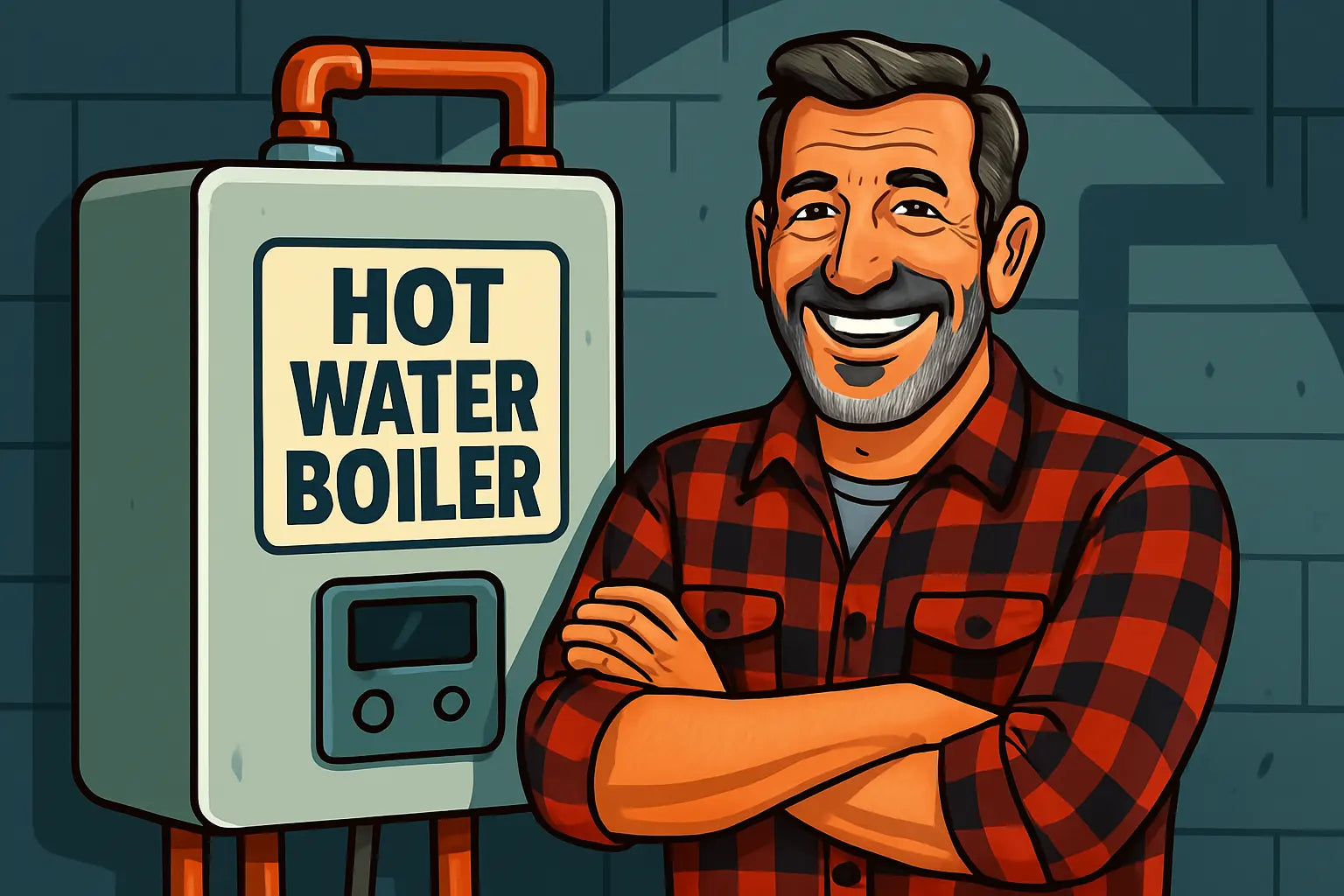Mike's Take Before We Start 👋
Hey there, it’s Mike. You ever hear that weird puffing noise from your boiler or smell something kinda off? Yeah—chances are your boiler venting isn’t doing its job. And with Weil-McLain boilers, proper exhaust setup is not just some technical detail—it’s critical to keep you safe and your heating running smooth. So let’s roll up our sleeves and talk venting.
What Is Boiler Venting and Why Should You Care?
Boiler venting is the process of pushing combustion gases (like carbon monoxide) safely out of your home. Every time your Weil-McLain boiler fires up, it’s creating exhaust—just like a car engine. And just like a car, those fumes need somewhere safe to go.
If venting isn’t working properly, here’s what could go wrong:
-
Dangerous gas buildup inside the home
-
Poor system efficiency
-
Premature failure of components
-
Voided warranty due to improper installation
According to the U.S. Environmental Protection Agency, carbon monoxide poisoning is a real risk when combustion gases are not properly vented. So yeah—it’s not just about performance. It’s about safety.
Types of Venting for Weil-McLain Boilers
There are a few different venting setups you might run into, depending on your boiler model and home construction:
1. Natural Draft (Chimney Venting)
Older boilers often use this system. It relies on hot gases rising naturally through a vertical flue or chimney.
-
Pros: Simple, no fans or electronics.
-
Cons: Susceptible to backdrafting, not very efficient.
2. Direct Vent
Pulls combustion air from outside and pushes exhaust out the wall using a sealed system.
-
Pros: High efficiency, sealed combustion.
-
Best for: Weil-McLain high-efficiency condensing boilers like the Evergreen or Ultra Series.
3. Power Vent
Uses a fan to exhaust gases through the side wall or roof. Not sealed—uses room air for combustion.
-
Pros: Flexible installation.
-
Watch out: Needs good indoor ventilation.
If you’re unsure what kind you’ve got, the Weil-McLain boiler product manuals are a solid place to start. They’ll spell out venting requirements by model.
How to Tell If Something's Wrong With Your Venting
You don’t need to be an HVAC pro to spot the signs. Here are some red flags to watch for:
-
Unusual odors near the boiler (think metallic or exhaust-like)
-
Visible rust or water stains around the vent pipe
-
Condensation dripping inside the flue pipe
-
Error codes on your boiler’s control panel related to combustion
Newer Weil-McLain models will often throw codes like E-02 (blocked flue), which you can confirm in the manual or by referencing this error code breakdown from Sanford Heating.
If you spot these issues, turn off the system and call in a pro. Messing with venting is no DIY project unless you really know your stuff.
Best Practices for Weil-McLain Boiler Venting
Let’s talk about how to do it right the first time—or fix it if you’ve got problems brewing:
-
Follow Local Code
Venting requirements can vary based on where you live. Always follow local building codes for gas appliances. -
Use the Right Materials
CPVC, polypropylene, and stainless steel are common for condensing units. Do not use standard PVC unless the manual specifically says it’s okay. -
Slope It Correctly
Horizontal venting should slope back toward the boiler to allow condensation drainage. This is one of the biggest mistakes I see in the field. -
Avoid Too Many Turns
Every elbow or bend adds resistance. Keep it simple and direct whenever possible. -
Seal All Joints
Use high-temp silicone or specified sealants to avoid leaks. No duct tape here, folks! -
Annual Inspections Are a Must
Even if the boiler’s humming along fine, a yearly look at the venting by a licensed tech keeps things safe. Check out this Energy Star boiler maintenance checklist to stay on track.
Real Talk: What I’ve Seen in the Field 🚨
I once got a call from a homeowner who had a brand-new Weil-McLain boiler installed by a handyman friend. Worked fine until mid-winter when it shut down and started flashing error codes. Turns out, they used PVC venting and glued it backward. Exhaust was leaking into the mechanical room. They were lucky—only noticed because their carbon monoxide alarm went off.
Point is: You can have the best boiler in the world, but if it can’t breathe right, it’ll fail you when you need it most.
When to Call in the Pros
If you’re:
-
Installing a new system
-
Replacing or relocating your current boiler
-
Seeing repeated venting-related error codes
-
Unsure if your venting meets code
…it’s time to bring in a certified HVAC tech. Weil-McLain boilers are fantastic workhorses, but only when paired with safe, correct venting.
Final Thoughts from Mike 🔧
If there’s one thing I’ve learned after years of crawling through basements and boiler rooms, it’s this: you can have the best boiler on the market, but if the venting isn’t done right, you’re asking for trouble. Whether it’s carbon monoxide concerns, efficiency drops, or just plain system stress, venting is one of those “invisible” jobs that makes everything else tick.
I always tell homeowners — don’t just go with whatever’s slapped onto the side of the house. Know your system. Get the venting checked yearly. And if you’re upgrading or replacing a boiler, make sure the new model’s venting matches your home’s layout and your climate. Especially with units like Weil-McLain’s high-efficiency boilers, the right venting setup is not optional — it’s essential.
Is your boiler not working? Visit my guide: Troubleshooting Common Causes.
So don’t skip the details. Stay safe, stay warm, and keep that system breathing easy.
Catch you on the next one 👋
- Mike, your cool HVAC neighbor







